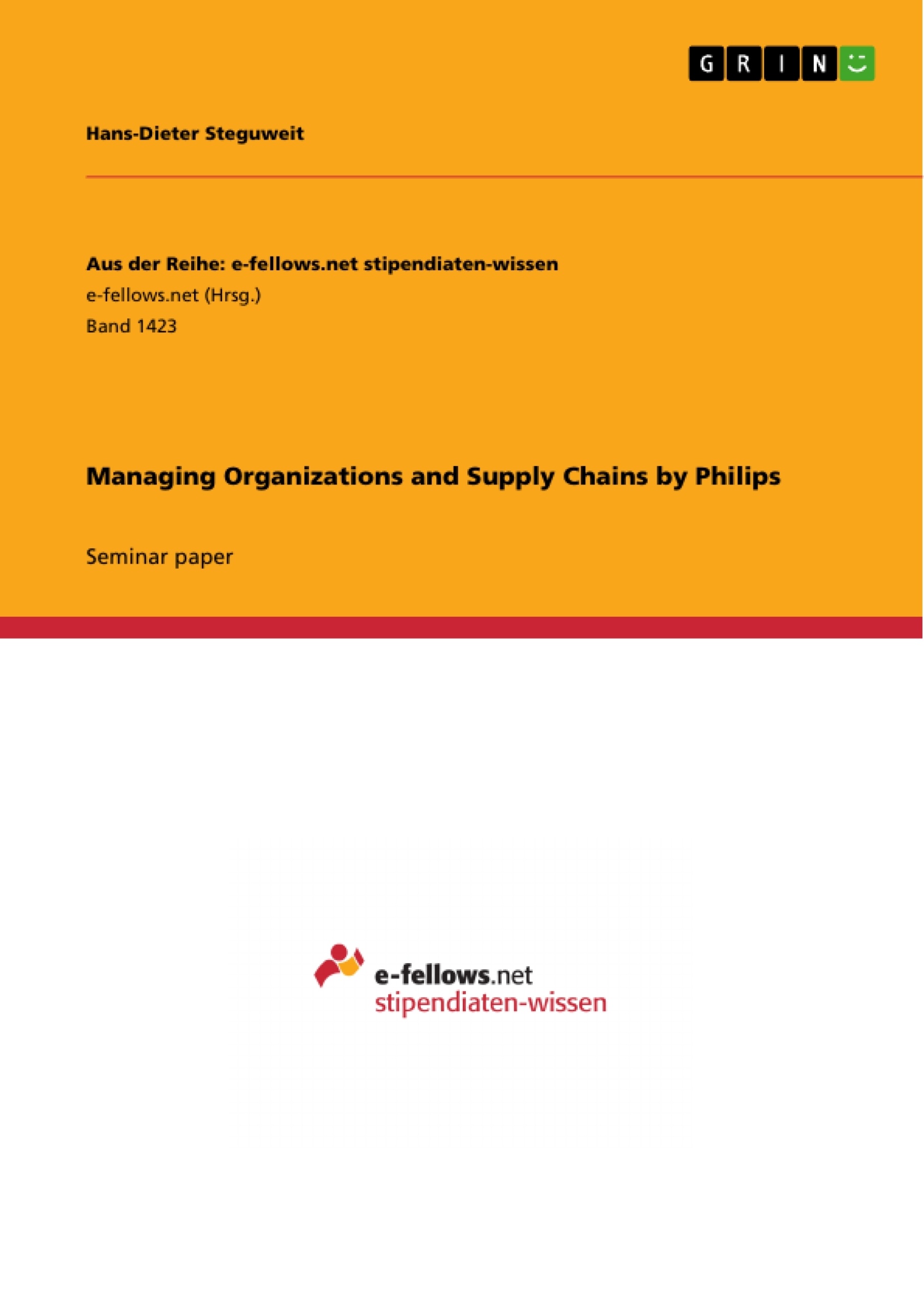Royal Philips Electronics N.V. is a Dutch company that was founded in 1891 and has since then become a major player in the electronic equipment industry. The company is headquartered in Amsterdam and employs 119.001 people worldwide, of which 78% are employed outside the Netherlands. Philips has operations in over 100 countries and identifies the Netherlands, the US, Germany, France, Brazil, Japan and China as their main markets. These countries make up 57.8% of total sales and 82.9% of total assets and are standing mainly in competition with Siemens and General Electronics.
From 1990 till last year Philips was in a phase of organizational transformation. Without restructuring the company’s portfolio in a simpler way Philips would have had extremely difficulties during the finance crises in 2008. Today the organization represents predominantly a classical Managing Diversity of Mintzberg’s five configurations which divides the company’s business into three segments: Healthcare, Consumer Lifestyle and Lighting.
In the healthcare sector Philips is leader in areas such as cardiac care, acute care and home healthcare. In 2010 Philips’ healthcare business was able to generate sales amounting to 8.6 billion EUR. The US is the largest healthcare market currently representing almost 50% of the global market. Philips’ consumer and lifestyle business is very broad covering areas such as television, shaving and beauty, multimedia and domestic appliances.
Currently this business unit employs approximately 18.400 people worldwide with registered sales of 8.9 billion EUR last year, of which 59.9% were generated in Western Europe and 40.1% in emerging markets. Philips Lighting spans the entire lighting value chain from lighting sources, electronics and controls to full applications and solutions. The company maintains sales and service organization in over 60 countries and runs manufacturing operations in 15 countries worldwide with sales of 7.6 billion EUR in 2010.5
Table of Content
1. Introduction
2. METHODS AND THEORETICAL BACKGROUND
3. APPLICATION OF METHOD
3.1. MAIN DESIGN PARAMETERS AND ORGANIZATIONAL STRUCTURE
3.2. CONTINGENCY FACTORS AND STRATEGIC ENVIRONMENT
3.3. PAST ORGANIZATIONAL RESTRUCTURING AND FUTURE VISIONS
4. DISCUSSION
5. CONCLUSION
6. APPENDIX
7. LIST OF REFERENCES
Royal Philips Electronics N.V
- Arbeit zitieren
- Hans-Dieter Steguweit (Autor:in), 2011, Managing Organizations and Supply Chains by Philips, München, GRIN Verlag, https://www.grin.com/document/300535
-

-

-

-
Laden Sie Ihre eigenen Arbeiten hoch! Geld verdienen und iPhone X gewinnen. -

-
Laden Sie Ihre eigenen Arbeiten hoch! Geld verdienen und iPhone X gewinnen. -

-
Laden Sie Ihre eigenen Arbeiten hoch! Geld verdienen und iPhone X gewinnen. -

-
Laden Sie Ihre eigenen Arbeiten hoch! Geld verdienen und iPhone X gewinnen. -

-
Laden Sie Ihre eigenen Arbeiten hoch! Geld verdienen und iPhone X gewinnen.

